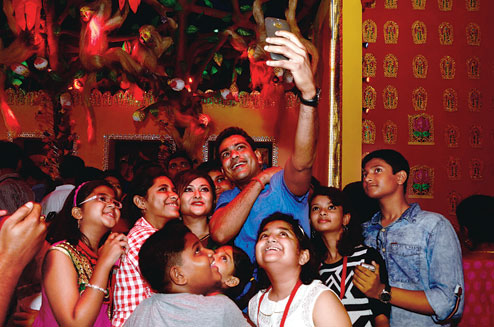Sajid Javid, Britain’s culture minister and one of the rising stars of British politics, is to set foot in Calcutta on Monday.
Javid, 44, whose formal title is Secretary of State for Culture, Media and Sport and who is a full member of David Cameron’s cabinet, was the subject of a very positive profile last month in the Daily Mail.
The paper’s right-wing columnists normally make a living by putting the boot into immigrants but for Javid, the long headline read: “Could Sajid Javid be Britain’s first Asian Prime Minister? His parents arrived here with just £1, yet he’s now a minister. That’s why this man believes immigrants are natural Tories?”
So who is Sajid Javid and what’s he doing in Calcutta?
Javid will have a busy day in Calcutta where he will host a reception. The day will begin early with a First World War Centenary Commemoration at the Commonwealth War Graves Cemetery. More than a million Indian soldiers fought for Britain in the First World War.
This will be followed with the launch of the community football development programme for girls under the Premier Skills Kolkata Goalz Project at Alipore Bodyguard Lines on Diamond Harbour Road.
He will then introduce the UK-India joint report at the Museums Round Table at the National Library.
For many years now, the British have been training staff in Indian museums. Privately, they say that Indian Museum is a wonderful place but it badly needs sorting out.
For the second part of his visit, Javid will go to Delhi where he will deliver a keynote speech at a UK-funded Cyber Governance Security conference; meet a number of ministers; and also attend a session at the British Council with young Indian creative entrepreneurs and Indians who have studied in the UK.
As culture secretary, he is chairman of the special advisory group supervising the erection of a statue of Mahatma Gandhi in Parliament Square, ready for unveiling on January 30, 2015.
A first-time member of parliament, elected in May 2010, Javid’s political rise has been swift.
After stints in the treasury as economic secretary and financial secretary, David Cameron brought him into the cabinet in April 2014.
He had previously been a banker for 18 years, working in senior positions in New York for Chase Manhattan, and later in Singapore for Deutsche Bank.
Javid’s father, Abdul-Ghani Javid, and mother, Zubaida, came to Rochdale in the north of England in the early 1960s from a village background in Punjab in Pakistan. The couple had five sons — Sajid is the third.
Abdul-Ghani initially worked in a cotton mill, then moved to the buses, first as a conductor and then a driver. By the time the family moved to Bristol, he had started a business in women’s clothes, with Zubaida doing the cutting and stitching at home.
Unlike P.G. Wodehouse’s creation, the bully Roderick Spode, 7th Earl of Sidcup, whose guilty secret (rumbled by Jeeves) was his ownership of a firm dealing in ladies’ lingerie, the culture secretary is quite happy to poke fun at himself: “I think it’s fair to say that I know more about ladies’ clothing than any other male MP!”
Abdul-Ghani, who died of cancer two years ago, planted the seeds of his son’s political thinking.
In the “winter of discontent” in 1978, when rubbish was not being cleared and even bodies were piling up in mortuaries because of trade union unrest, his father saw hope in Margaret Thatcher.
“She will be good for the country,” Abdul-Ghani told his son, then nine. “She’s got steel. She’s the one who is going to sort out the country.”
“And, of course, she did,” asserted Javid, who keeps a portrait of the late Lady Thatcher behind his office desk.
As culture secretary, his mission is to make enjoyment of cultural activities accessible to everyone in society — “I believe that culture is for everyone.”
Not just the ethnic minorities but the poorer sections of society, too, may feel they have now got a champion in Javid who added with quiet determination: “And when I say everyone – I really do mean everyone.”
Javid himself has a quality not always obvious among folk from the Indian sub-continent — he does self-deprecation.
“Self-deprecation is a good thing,” he grinned, looking completely relaxed in his 6th floor office on Parliament Street. “Don’t take yourself too seriously.”
When he addressed the most powerful and somewhat precious men and women in television at the Royal Television Society in September, he disarmed everyone by recalling his school days: “If life had taken a different turn I could have been part of the TV industry myself. My careers adviser at school told me I had a bright future working in television.”
He got the timing right with a little pause.
Then came the punch line: “Delivering them at Radio Rentals for repair.”
source: http://www.telegraphindia.com / The Telegraph, Calcutta / Front Page> Calcutta> Story / by Amit Roy in London / Monday – October 13th, 2014








